In today’s CNC machining manufacturing world, CNC machining plays a vital role in the efficient production of precise and complex parts. However, for a CNC machining facility to thrive, it is important to have a thorough understanding of the costing involved. In this article, we will look at all the factors and techniques that help in calculating the cost of CNC machining.
Understanding CNC Machining Basics
1.1 What is CNC machining?
At the heart of CNC machining is Computer Numerical Control (CNC) machining, a cutting-edge process that utilizes computer control to accurately manufacture parts in a variety of materials. This technology replaces traditional manual machining and provides modern manufacturing with unrivaled precision and efficiency.
1.2 CNC Machining Process Overview
As a leading CNC machining facility, we utilize a variety of CNC machining processes to meet our customers’ needs.
CNC Milling
Milling involves rotating the cutting tool while moving it along multiple axes to remove material and create complex shapes.
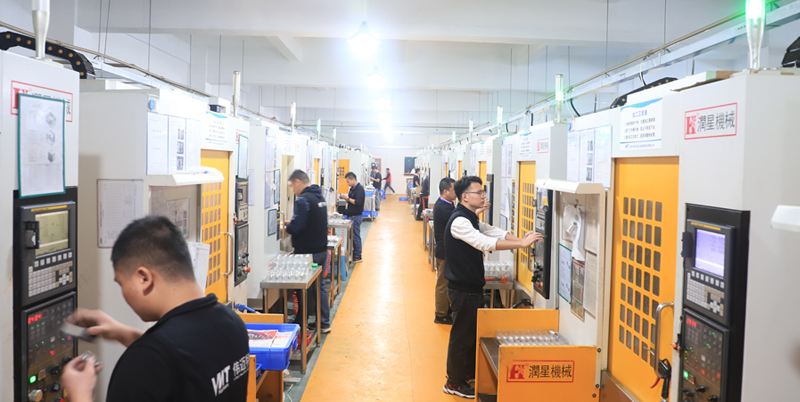
CNC Turning
Turning utilizes a single point cutting tool to remove material from a rotating workpiece to create a cylindrical shape.
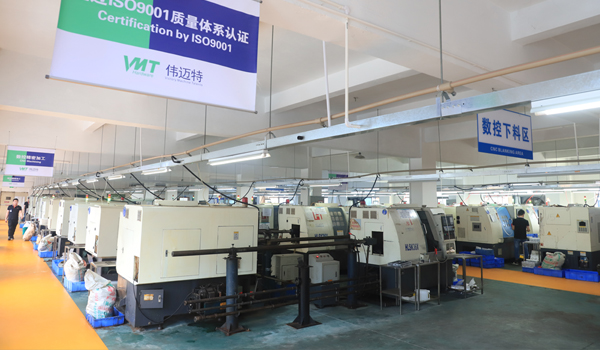
Citizen Swiss-type Machining
Citizen Swiss-Type Machining is a specialized form of precision machining that originated in Switzerland. It is also commonly known as Swiss-type turning or Swiss-type turning. This method of machining was originally developed by Swiss watchmakers for the production of small, complex, high-precision CNC watch case parts.
In Swiss-type machining, the workpiece is held in a chuck and rotated while being cut by a stationary cutting tool. Unlike conventional turning, where the cutting tool moves along the length of the workpiece, in walk-behind machining, the tool remains fixed. Instead, the collet and guide bush move the workpiece to form the desired shape.

Drilling
Drilling is used to make holes in the workpiece for precise positioning and assembly.
Grinding
Grinding is a finishing process that utilizes grinding wheels to achieve fine surface finishes and tight tolerances.
2. What determines the cost of CNC machining?
CNC machining, or Computer Numerical Control machining, has become a cornerstone of modern manufacturing due to its precision and efficiency in producing complex parts. However, the cost of CNC machining is a key consideration for companies. There are several factors that can affect the cost of CNC machining, and understanding these factors is essential for efficient budgeting and cost optimization. In this article, we will look at the key determinants that affect the cost of CNC machining.
2.1 Material Selection
One of the main factors affecting the cost of CNC machining is material selection. Different materials have different costs, and factors such as availability, machining complexity and tool wear can affect the overall cost. Specialty materials may require specialized tooling and expertise, resulting in higher machining costs compared to more common materials.
Metal
Metal materials are commonly used in CNC machining due to their strength, durability, and suitability for various applications. The cost of metal materials can vary significantly based on factors such as material type, grade, and availability.
Common metal materials:
Aluminum: Aluminum is a popular choice for CNC machining due to its light weight, corrosion resistance and ease of machining. It is often more cost effective than other metals such as stainless steel and titanium.
Stainless Steel: Stainless steel has excellent corrosion resistance and strength. It is typically more expensive than aluminum, but less expensive than higher-end materials such as titanium and inconel.
Steel: Carbon steel is usually cheaper than stainless steel and is widely used for its strength and versatility.
Titanium: Titanium is a premium material known for its excellent strength-to-weight ratio, but it is much more expensive compared to aluminum and steel.
Inconel: Inconel is a high performance alloy with excellent resistance to extreme temperatures and corrosion. It is one of the most expensive metallic materials.
The choice of metal material depends on the specific requirements of the part and the project budget. While some metals may be cost-effective, others may be favored for their unique properties, albeit at a higher cost.
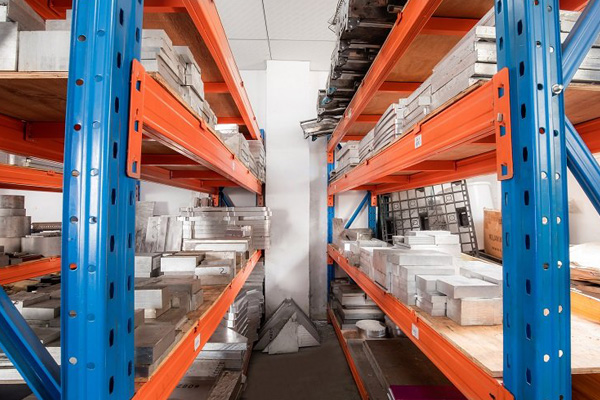
Plastics
Plastic materials are becoming increasingly popular for CNC machining due to their versatility, light weight and cost advantages. Plastics have a range of mechanical and chemical properties that make them suitable for a variety of applications.
Common plastic materials:
ABS (Acrylonitrile Butadiene Styrene): ABS is a cost-effective, widely used plastic with good impact resistance and machinability.
Nylon (Polyamide): Nylon is known for its high strength, flexibility and low friction. It is generally more expensive than ABS.
Polypropylene (PP): Polypropylene is an economical plastic with good chemical resistance and thermal stability.
Polycarbonate (PC): Polycarbonate has excellent transparency and impact resistance. It is usually more expensive than ABS and PP.
PEEK (Polyetheretherketone): PEEK is a high-performance thermoplastic with excellent mechanical properties. It is one of the most expensive plastic materials.
In many cases, certain plastic materials may have a cost advantage over metals, especially for parts that do not require the high strength or extreme condition resistance provided by metals such as titanium and inconel alloys.

2.2 CNC Machined Part Complexity and Design
The complexity of CNC part design directly affects the machining process, lead times, and overall machining time. Parts with complex features or demanding geometries require more precise toolpaths and additional setups, resulting in increased costs.
2.3 Machining Tolerances and Surface Finishes
Tight tolerances and specific surface finish requirements often result in additional machining steps and more time spent on quality control. Achieving tighter tolerances and smoother surface finishes increases the complexity of machining, which in turn increases costs.
2.4 Surface Treatment
Surface preparation involves coating or finishing processes on the exterior of CNC machined parts. The choice of surface finish affects the complexity of the machining process, the materials required, and the labor involved, all of which affect the overall CNC machining cost.
Common surface finishes:
Anodizing: Anodizing is a popular surface treatment for aluminum parts that provides corrosion resistance and enhances surface hardness. It can increase overall machining costs due to the additional preparation and machining steps required.
Plating: Plating, such as electroplating, can improve part aesthetics and prevent corrosion. The cost of plating depends on the type of metal used and the thickness of plating required.
Powder Coating: Powder coating is a cost-effective and durable surface treatment that enhances the appearance of parts and provides protection against environmental factors.
Polishing: Polishing can improve the smoothness and aesthetics of a part, but may require additional labor and time, affecting overall processing costs.
Painting: Painting offers a wide range of color options and customization, but may require additional masking and curing steps that increase production costs.
2.5 Batch Size and Volume Production
Due to economies of scale, batch size and volume production affect CNC machining costs. Larger production runs typically provide a cost advantage per part because fixed setup costs are allocated to more parts.
2.6 Cutting Tools and Tool Life
Cutting tool selection and quality significantly affect machining costs. Higher quality tools may have a higher upfront cost, but can reduce machining time and increase efficiency in the long run.
2.7 Labor Costs
The labor costs involved in CNC machining are another key determinant of overall costs. Skilled labor, expertise, and experience play a key role in efficient and accurate machining and affect the final cost.
2.8 Setup Time and Preparation
The time required for machine setup and preparation before the actual machining begins affects the total cost. An efficient setup program saves time and reduces expenses.
2.9 Secondary and Finishing Operations
Additional post-processing operations, such as deburring, polishing and assembly, can increase overall CNC machining costs.
2.10 Geographic Location
The geographic location of a CNC machining facility affects costs, including material availability, labor rates, and transportation costs.
3. How do CNC machining factories quote?
CNC machining factories provide precision machining services to a wide range of industries and play a vital role in modern manufacturing. As a customer seeking CNC machining services, understanding how these factories generate quotes is critical to developing a budget and making informed decisions. Below is a look at the CNC machining shop’s quoting process and the factors that influence the pricing of a machining project:
3.1 Initial Assessment of Project Requirements
The quoting process begins with a thorough assessment of the customer’s project requirements. the CNC machining shop gathers all relevant information, including part drawings, specifications, material preferences, and expected quantities.
3. 2 Material Selection and Procurement
Material selection is an important factor in the total cost of a CNC machining project. Factors such as material availability, cost, and suitability for a particular application are considered by the shop before selecting the most appropriate material for the project.
3.3 CNC Machining Complexity and Tolerances
The complexity of the CNC part design and the required CNC machining tolerances have a direct impact on machining time and difficulty. Complex designs and tight tolerances can lead to higher costs due to the need for specialized tooling and additional quality control measures.
3.4 Machine Time and Labor Costs
CNC machining shops evaluate the estimated machine time required to complete a project based on the complexity of the design and material characteristics. Labor costs are calculated taking into account the expertise of the machinists involved in the project.
3.5 Quantity and Lot Size
The number of parts required and the size of the lot required will affect pricing. Due to economies of scale, larger production runs usually result in cost savings because setup and machine preparation costs are spread over more parts.
3.6 Additional Operations and Finishing
If additional operations are required, such as surface finishing, deburring, or assembly, a CNC machining shop will include these costs in the quote.
3.7 Geographic Location and Transportation
The geographic location of the CNC machining factory and the location of the customer may affect transportation costs. The factory will consider transportation costs when generating the final quote.
3.8 Quality Control and Inspection
CNC machining factories follow strict quality control procedures to ensure the highest level of precision and accuracy. Costs associated with quality control and inspection are factored into the quote.
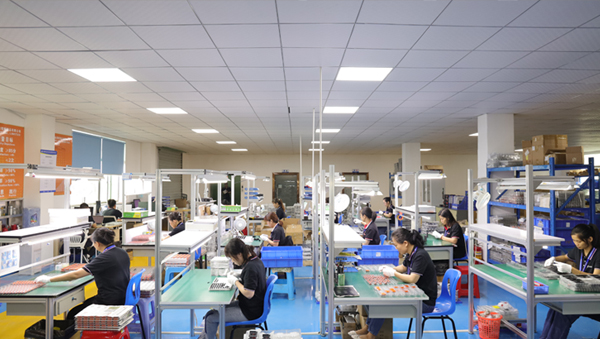
3.9 Quotation Software and Estimating Tools
Some CNC machining facilities utilize specialized software and estimating tools to generate accurate and detailed quotes. These tools help streamline the quoting process and provide a transparent breakdown of costs.
3.10 Providing Quotes to Customers
After considering all relevant factors, CNC machining factories provide customers with a detailed quote that includes a cost breakdown, estimated delivery time, and any additional terms and conditions.
CNC machining factories’ quotes require a careful evaluation of project requirements, material selection, machine time, labor costs, and other factors that affect overall pricing. By understanding the quoting process, customers can make informed decisions, choose the right CNC machining partner, and ensure the success of their manufacturing project.
4. How Can I Reduce My CNC Machining Costs?
CNC machining is a highly efficient manufacturing process that provides precision and versatility in the production of complex parts. However, cost considerations are critical for companies seeking to optimize their manufacturing operations. In this article, we’ll explore several strategies for reducing CNC machining costs without compromising quality.
1. Design for Manufacturability (DFM)
Implementing design for manufacturability principles ensures that parts are designed with ease of manufacture in mind. Simplifying designs, minimizing complex features and avoiding over-design can help reduce machining time and material waste, resulting in cost savings.
2. Material Selection and Standardization
Selecting the right material is critical to achieving part quality and cost effectiveness. Select materials that meet the required specifications but are not too expensive. Consideration should also be given to material availability and ease of machining to achieve the right balance.
3. CNC Machining Tolerances
Tight tolerances are often required for some applications, but they can significantly increase manufacturing costs. Balancing tolerances with the functional requirements of the part can help control costs while maintaining an acceptable level of quality.
4. Efficient Tooling Strategies
Selecting the right cutting tool and optimizing the tool path can significantly reduce machining time and tool wear. Utilize high quality tools and implement efficient tool changes to increase overall productivity.
5. Automation and Robotics
Integrating automation and robotics into CNC machining processes can increase efficiency and reduce labor costs. Automated loading and unloading of workpieces and unmanned machining during off-hours maximizes machine utilization.
6. Continuous Improvement and Lean Manufacturing
Adopting lean manufacturing principles encourages the elimination of waste and streamlining of processes. Inefficiencies are identified and addressed to minimize material waste, downtime and rework.
7. Quality Control and Inspection
Maintaining part quality requires rigorous quality control and inspection processes. Implementing quality control measures at critical stages of production ensures that parts meet required specifications and reduces the potential for costly rework or scrap.
8. Material Optimization
Minimize material waste by optimizing part nesting and layout. Advanced software is used to determine the most efficient arrangement of parts on inventory materials to maximize material utilization.
9. Material Waste Reduction
Minimize material waste by optimizing part nesting and material usage to help save costs. Reduce waste and material costs by utilizing advanced software to efficiently arrange parts on material stock.
10. Multi-Axis Machining
Investing in multi-axis CNC machines allows complex operations to be performed with fewer setups. Multi-axis machining allows simultaneous cutting from different angles, reducing the need for multiple tool changes and setups.
11. Minimize Secondary Operations
Reducing or eliminating secondary operations saves time and money. Design parts that require minimal post machining finishing, deburring or assembly.
12. Collaboration with CNC Machining Specialists
Work with experienced CNC machining experts who can provide valuable insight and guidance on cost optimization. Work closely with the machining team to identify opportunities to improve efficiency.
13. Mass Production and Volume Discounts
Optimizing machine setups and reducing material waste, batch assembling similar parts together can save money. Volume production allows CNC machining facilities to capitalize on economies of scale and reduce cost per part.
14. Continuous Improvement
Embracing a culture of continuous improvement ensures that the efficiency and quality of the manufacturing process is regularly evaluated. Machining teams are encouraged to provide feedback to identify areas for optimization and cost reduction.
15. Outsourcing Requirements
Outsourcing to other countries is also one of the ways to reduce the cost of CNC machining. You can look for CNC machining workers around the world to outsource CNC machining projects. Such as Asian countries or Europe and the United States, Southeast Asia and other countries, China CNC machining factories relative to Europe and the United States, the price is relatively cheap, but for some Southeast Asian countries or other countries will be a little more expensive, you can make regional price comparisons, looking for CNC machining factories in line with your CNCMF can provide you with high-quality and competitively priced CNC machining manufacturer companies in China.
Reducing CNC machining costs involves a combination of intelligent design choices, efficient tooling strategies, material optimization and process improvements. By adopting lean manufacturing principles, embracing automation and partnering with CNC machining experts, companies can optimize their manufacturing operations, improve cost efficiency and achieve high-quality results in a competitive manufacturing environment. Implementing these strategies not only reduces CNC machining costs, but also increases overall productivity and customer satisfaction.

Case Studies: Successful CNC Machining Cost Reduction Case
Case: Curved Arrow-Shaped Aluminum CNC Machining Parts
The front end of the customer’s part looks like an arrow and needs to be surfaced with a relatively high surface finish for filming. In order to better realize the customer’s idea, we conducted a project review and decided to adopt the method of cold forging + CNC machining, which not only meets the customer’s requirements for materials, but also reduces the cost. Seeing this CNC machining part, do you have a better CNC machining method? Contact us to discuss.
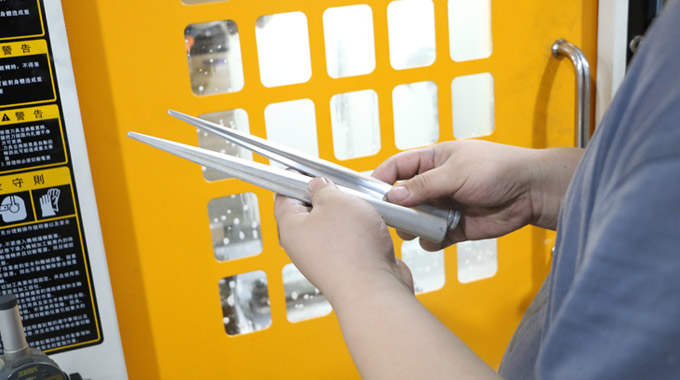
Case: 5-Axis CNC Machining Parts
This is an irregular eccentric part. Machining with 5-axis CNC takes a long time, wastes material, and greatly increases the cost. The client has a limited budget and wishes to reduce costs. Our engineering team has passed the process audit and adopts dismantling process to process with 3+2 axis CNC. Although the processing time is long, it saves materials and 20% of the cost. Seeing this CNC machining part, do you have a better CNC machining method? Contact us to discuss.
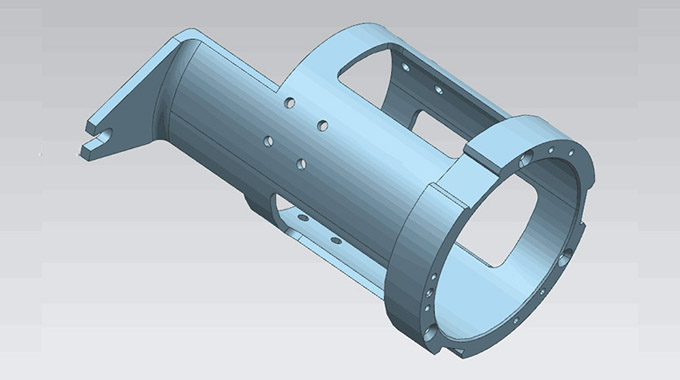
Common FAQs about CNC Machining Costs
CNC machining is a highly sought-after manufacturing process known for its precision and versatility. However, questions about CNC machining costs often arise as businesses seek to optimize their manufacturing operations. In this section, we will address some of the most common FAQs related to CNC machining costs.
1. How are CNC machining costs determined?
CNC machining costs are determined based on various factors, including material selection, part complexity, machining time, labor costs, batch size, additional operations, and geographic location. An accurate quote considers all these elements to provide a comprehensive overview of the overall cost.
2. Are there any hidden costs in CNC machining quotes?
Reputable CNC machining providers provide transparent and detailed quotes that encompass all relevant costs. However, it’s essential to clarify any uncertainties and ask for a breakdown of the quote to ensure a clear understanding of all cost components.
3. Can I negotiate the quoted price with the CNC machining provider?
In some cases, negotiations may be possible based on the scope of the project and specific requirements. Open communication with the CNC machining provider allows for discussions about potential cost-saving options.
4. How can I optimize CNC machining costs without compromising part quality?
Optimizing CNC machining costs while maintaining part quality involves several strategies. Design for Manufacturability (DFM) principles, material selection, batch production, efficient tooling strategies, and collaboration with CNC experts are all effective ways to achieve this balance.
5. Can I request multiple quotes from different CNC machining providers?
Absolutely! Requesting quotes from multiple CNC machining providers allows you to compare pricing, services, and capabilities to find the best fit for your project’s requirements and budget.
6. How can I reduce material waste in CNC machining?
To reduce material waste, optimize part nesting on material stock using advanced software. By arranging parts efficiently, you can maximize material utilization and minimize waste.
7. Does batch production lower CNC machining costs?
Yes, batch production often leads to cost savings. Batching similar parts together allows CNC machining providers to optimize machine setups and utilize materials more efficiently, resulting in lower per-part costs.
8. Can CNC machining providers help with cost optimization?
Experienced CNC machining providers can offer valuable insights and suggestions to optimize costs while maintaining part quality. They can advise on material choices, machining strategies, and alternative approaches to achieve cost-effective results.
9. How can I ensure CNC machining project cost accuracy?
To ensure cost accuracy, provide detailed part drawings, specifications, material preferences, and expected quantities to the CNC machining provider. Clear communication and collaboration throughout the quoting process enhance cost accuracy.
10. What are the primary cost drivers in CNC machining?
The primary cost drivers in CNC machining include material selection, part complexity, machining time, labor costs, and additional operations such as finishing and assembly.
Understanding the nuances of CNC machining costs is essential for businesses seeking efficient and cost-effective manufacturing solutions. By addressing these common FAQs, manufacturers can make informed decisions, optimize their CNC machining projects, and achieve high-quality results within their budget constraints. Transparent communication with CNC machining providers and a focus on efficiency and part quality contribute to successful and cost-efficient CNC machining endeavors.
Conclusion
Mastering CNC machining cost calculations is critical to the success of any CNC machining shop. By understanding the factors that affect costs and implementing effective cost reduction strategies, factories can increase profitability, remain competitive, and deliver high-quality products to customers.
At our CNC machining facility, we believe in total transparency in cost calculations. By understanding all factors and employing cost-reducing techniques, we can provide a custom solution for your custom CNC machining project that balances quality and cost-effectiveness.
From material selection to advanced programming and efficient machining strategies, we ensure that each project is carefully analyzed to provide accurate cost estimates. Our team of experts is dedicated to assisting you with your CNC machining decisions, providing high-quality custom solutions that meet your exact specifications while optimizing costs.